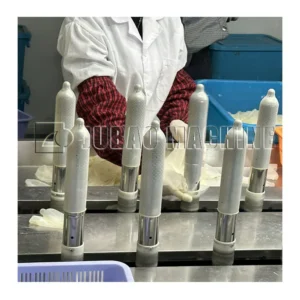How to Start a Condom Company: A Comprehensive Business Guide
Table of Contents
Starting a condom company requires careful planning, substantial investment, and a deep understanding of both the healthcare industry and consumer needs. This comprehensive guide will walk you through every essential step of launching a successful condom business, from initial market research to scaling your operations.
Market Research and Analysis
Before diving into the condom industry, conducting thorough market research is crucial for understanding the landscape and identifying opportunities for your brand.
Understanding Your Target Audience
The condom market serves diverse demographics with varying needs and preferences. Your target audience might include:
- Young adults (18-30): Often price-sensitive and drawn to innovative designs or eco-friendly options
- Health-conscious consumers: Prioritize safety, quality, and specialized features
- Couples seeking premium products: Willing to pay more for enhanced experiences
- Organizations and institutions: Bulk purchasers for educational or public health programs
Competitive Analysis
Study established brands like Durex, Trojan, and Lifestyles to understand their positioning, pricing strategies, and market share. Identify gaps in the market where your brand can differentiate itself through:
- Unique materials or textures
- Sustainable packaging
- Targeted marketing to underserved demographics
- Innovative distribution methods
- Competitive pricing strategies
Business Planning and Strategy
Choosing Your Business Model
You have several options for structuring your condom business:
- Private Label Manufacturing: Partner with existing manufacturers to produce condoms under your brand name
- Contract Manufacturing: Work with specialized facilities to create custom formulations
- In-House Production: Invest in your own manufacturing facility (requires significant capital)
- Hybrid Approach: Start with private labeling and transition to custom manufacturing as you scale
Financial Planning
Starting a condom company requires substantial upfront investment. Key financial considerations include:
- Initial Investment: $250,000 – $2 million depending on your chosen model
- Regulatory Costs: $50,000 – $200,000 for FDA approval and testing
- Manufacturing Setup: $500,000 – $5 million for in-house production
- Marketing Budget: 15-20% of projected revenue
- Working Capital: 6-12 months of operating expenses
Legal and Regulatory Requirements
FDA Approval Process
In the United States, condoms require FDA approval through the 510(k) premarket notification process:
- Predicate Device Identification: Find an existing approved condom similar to yours
- Testing Requirements: Conduct biocompatibility, performance, and shelf-life testing
- Documentation: Prepare comprehensive technical documentation
- Submission Review: FDA review typically takes 90-180 days
- Quality System: Implement ISO 13485 quality management systems
International Standards
To expand globally, ensure compliance with international standards:
- ISO 4074: International standard for condom specifications
- CE Marking: Required for European market entry
- WHO Prequalification: Essential for public sector sales
- Regional Regulations: Research specific requirements for target markets
Manufacturing and Quality Control
Production Methods
Condom manufacturing involves several specialized processes:
- Latex Dipping: Most common method using natural rubber latex
- Polyurethane Processing: For latex-free alternatives
- Polyisoprene Production: Synthetic latex for sensitive users
- Lambskin Processing: Natural material for premium products
Quality Assurance
Implement rigorous quality control measures throughout production:
- Electronic Testing: 100% electronic testing of every condom
- Burst Testing: Sample testing for strength and durability
- Aging Tests: Accelerated aging to determine shelf life
- Package Integrity: Ensuring proper sealing and labeling
- Batch Documentation: Complete traceability for recall purposes
Branding and Marketing Strategy
Brand Development
Creating a strong brand identity is crucial in the competitive condom market:
- Brand Positioning: Define your unique value proposition (safety, pleasure, sustainability)
- Visual Identity: Develop professional, appealing packaging design
- Brand Voice: Balance professionalism with approachability
- Product Names: Create memorable, appropriate product names
- Messaging Strategy: Focus on benefits rather than just features
Marketing Channels
Due to advertising restrictions, creative marketing approaches are essential:
- Digital Marketing: SEO-optimized websites, social media presence
- Educational Content: Sexual health blogs, safety information
- Influencer Partnerships: Collaborate with health advocates and educators
- Medical Channel Marketing: Partner with healthcare providers
- Trade Shows: Participate in healthcare and pharmaceutical exhibitions
Distribution and Sales Channels
Retail Partnerships
Securing retail distribution is critical for market penetration:
- Pharmacy Chains: CVS, Walgreens, Rite Aid for health-focused positioning
- Grocery Stores: Major chains for mainstream market access
- Convenience Stores: 7-Eleven, Circle K for impulse purchases
- Adult Retailers: Specialized stores for premium products
- College Campuses: Health centers and vending machines
Online Sales Strategy
E-commerce provides direct access to consumers and higher margins:
- Direct-to-Consumer Website: Build your own e-commerce platform
- Amazon Marketplace: Leverage existing customer base and logistics
- Subscription Services: Offer convenient monthly delivery options
- B2B Platforms: Target institutional buyers and healthcare providers
- International Expansion: Use online channels to test global markets

Common Challenges and Solutions
Starting a condom company presents unique challenges that require strategic solutions:
- Regulatory Complexity: Work with experienced consultants and invest in proper testing
- Marketing Restrictions: Focus on educational content and health benefits
- High Competition: Differentiate through innovation, quality, and niche targeting
- Supply Chain Management: Develop relationships with reliable suppliers and backup options
- Quality Control: Implement robust testing procedures and maintain detailed documentation
Conclusion and Next Steps
Starting a condom company requires significant investment, regulatory expertise, and strategic planning. Success depends on thorough market research, compliance with strict quality standards, and innovative marketing approaches within regulatory constraints.
Your next steps should include:
- Conducting detailed market research and competitor analysis
- Developing a comprehensive business plan with realistic financial projections
- Consulting with regulatory experts to understand approval requirements
- Identifying potential manufacturing partners or facility locations
- Building relationships with distributors and retail partners
- Securing adequate funding for the 18-24 month development timeline
While challenging, the condom industry offers significant opportunities for entrepreneurs who approach it with proper preparation, adequate resources, and a commitment to quality and safety. The growing awareness of sexual health and the expanding global market create favorable conditions for new entrants who can differentiate themselves effectively.

